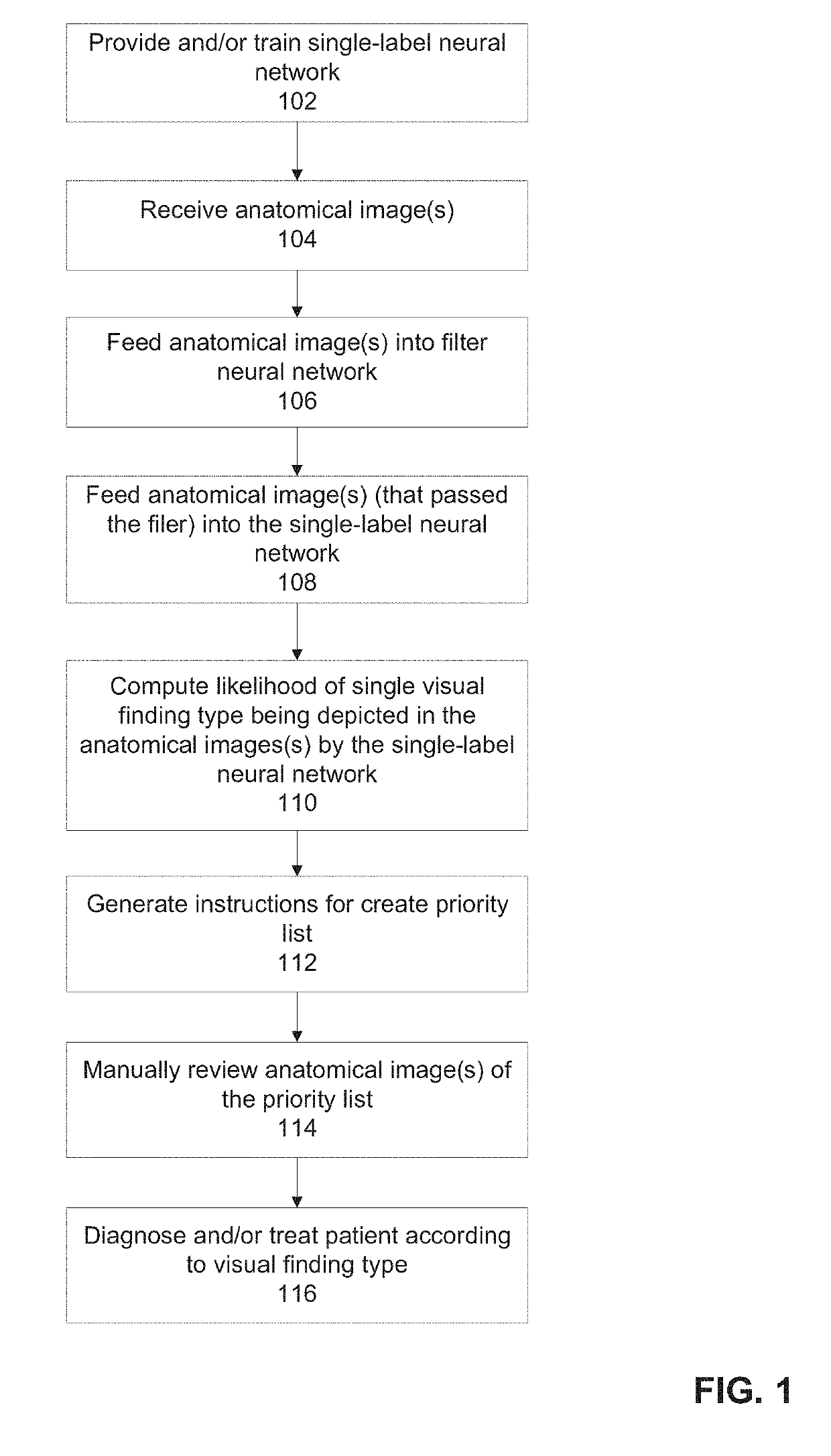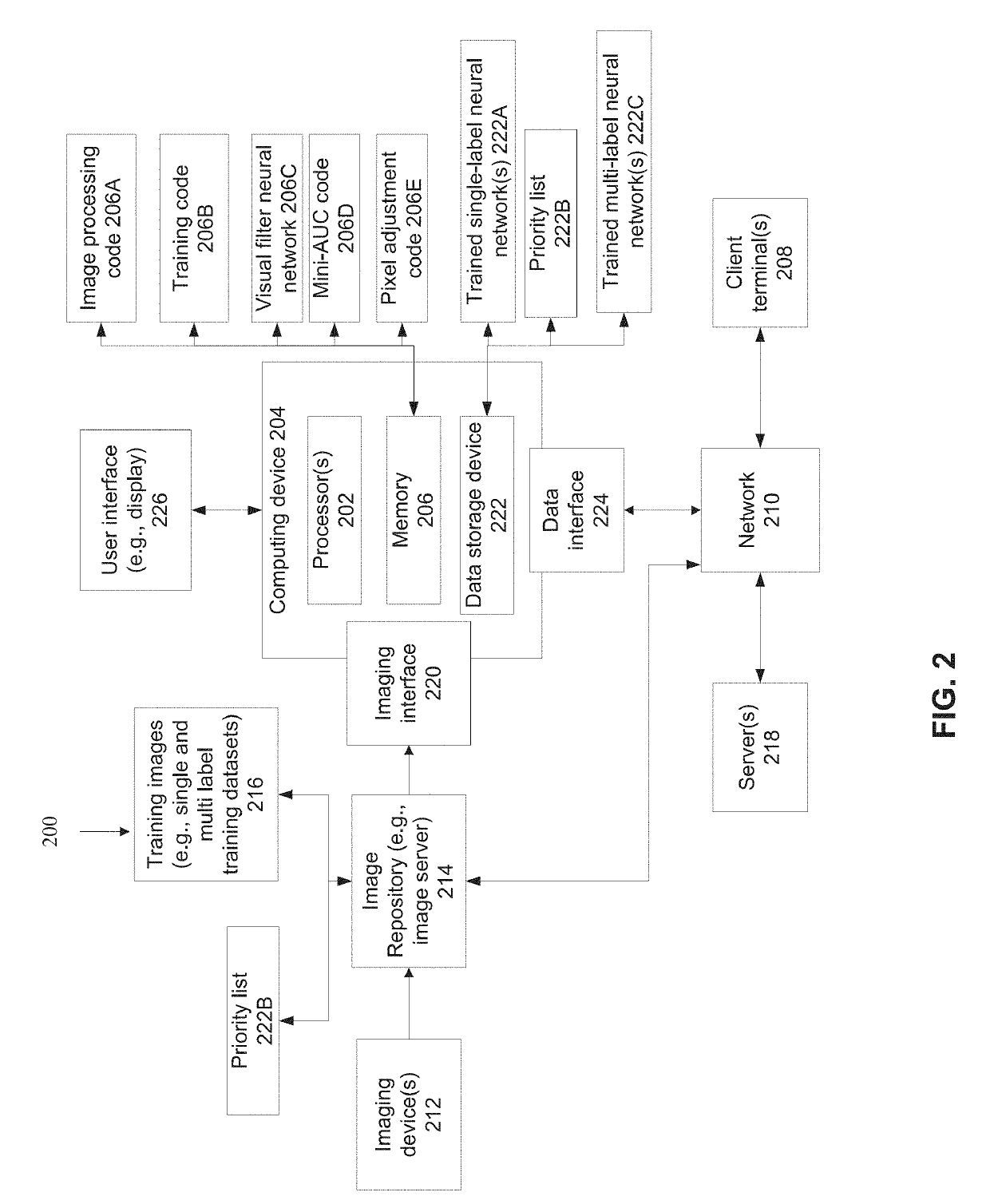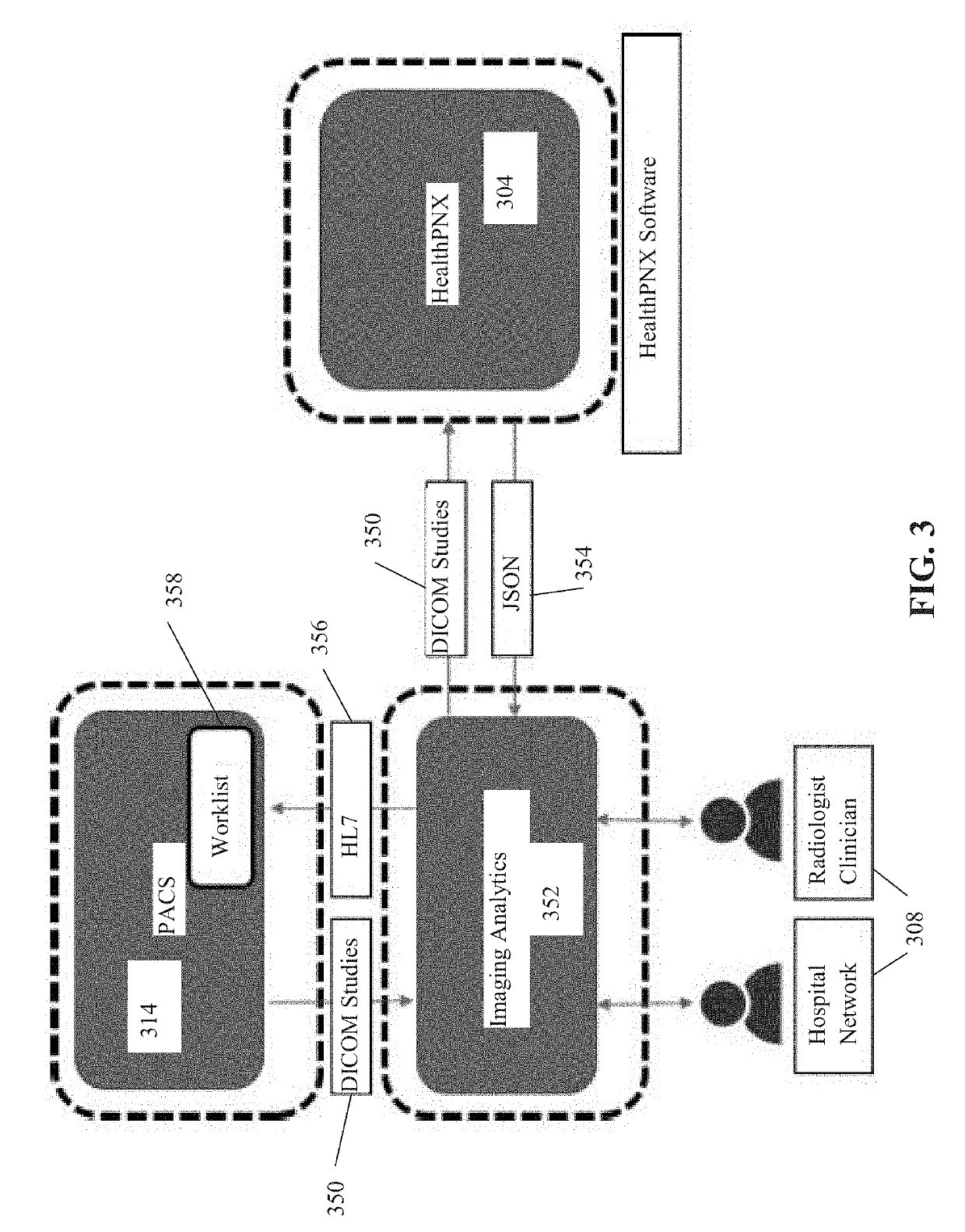Systems and methods for detecting an indication of a visual finding type in an anatomical image
a visual finding and anatomical image technology, applied in the field can solve the problems of radiologist's inability to detect critical findings, unable to accurately detect the type of visual finding in anatomical images, and difficulty in manual visual assessment (e.g., x-ray images) of medical anatomical images, and may be missed by the radiologis
- Summary
- Abstract
- Description
- Claims
- Application Information
AI Technical Summary
Benefits of technology
Problems solved by technology
Method used
Image
Examples
examples
[0177]Reference is now made to the following examples of training the single-label neural network from the multi-label neural network, and analysis of anatomical images by the trained single-label neural network for identification of an indication of a visual finding type denoting an acute medical condition for early and rapid treatment thereof, which together with the above descriptions illustrate some implementations of the systems, methods, apparatus, and / or code instructions described herein in a non limiting fashion.
[0178]Inventors performed a computational evaluation according to the systems and / or methods and / or apparatus and / or code instructions described herein, based on the features and / or system components discussed with reference to FIGS. 1-4.
[0179]Inventors performed a computational evaluation for training the single-label neural network for detecting an indication of pneumothorax in PA (posterior-anterior) and / or AP (anterior-posterior) two dimensional (2D) chest x-ray...
PUM
 Login to View More
Login to View More Abstract
Description
Claims
Application Information
 Login to View More
Login to View More - R&D
- Intellectual Property
- Life Sciences
- Materials
- Tech Scout
- Unparalleled Data Quality
- Higher Quality Content
- 60% Fewer Hallucinations
Browse by: Latest US Patents, China's latest patents, Technical Efficacy Thesaurus, Application Domain, Technology Topic, Popular Technical Reports.
© 2025 PatSnap. All rights reserved.Legal|Privacy policy|Modern Slavery Act Transparency Statement|Sitemap|About US| Contact US: help@patsnap.com



